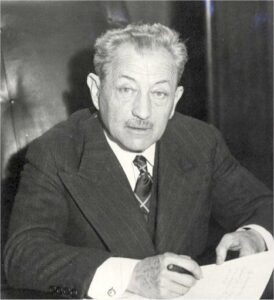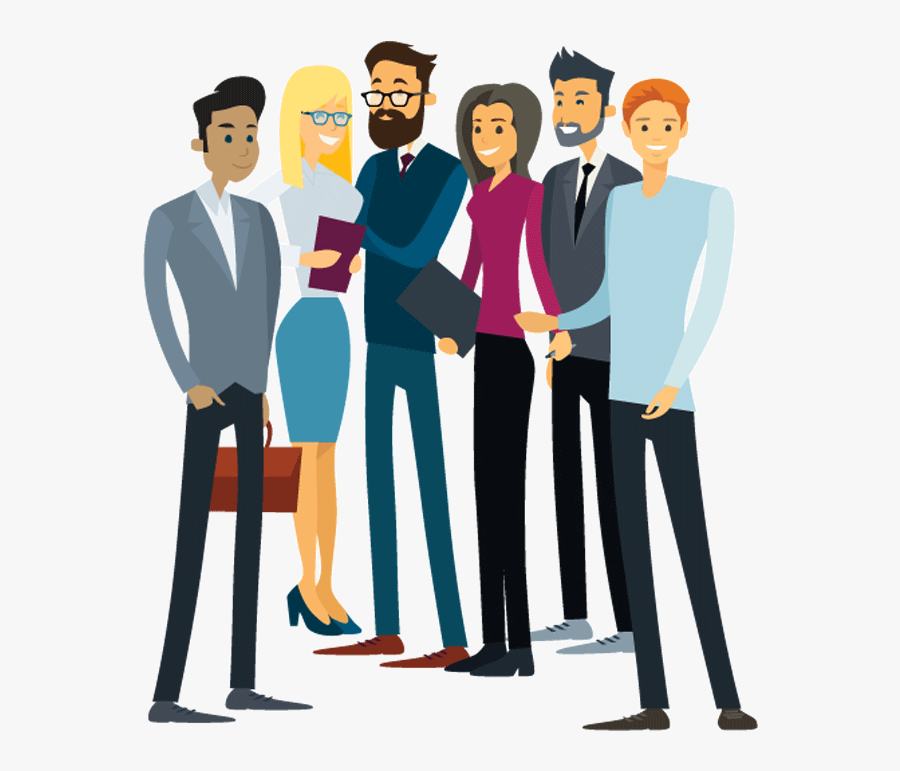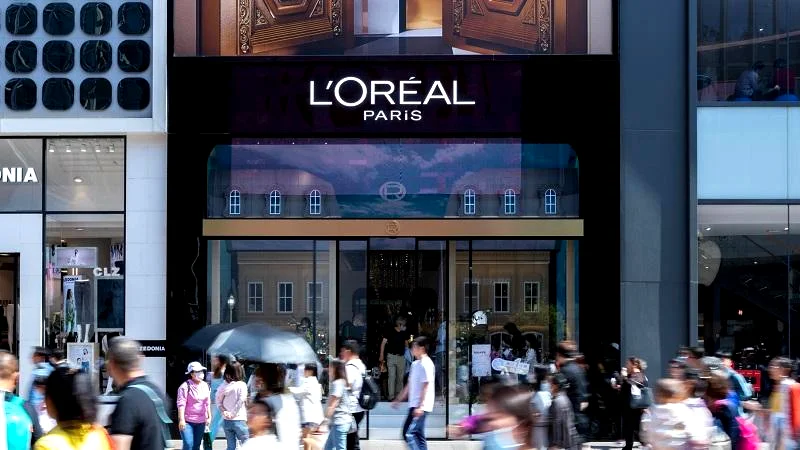L’Oréal, a name synonymous with innovation and beauty, reigns supreme as the world’s largest cosmetics company. Its rich history, dating back to 1909, is a testament to its unwavering dedication to empowering individuals and shaping the beauty industry.

Fueled by the vision of a young chemist, Eugène Schueller, L’Oréal embarked on its journey with a revolutionary hair dye in 1909. Schueller’s unwavering commitment to research and innovation laid the foundation for the company’s remarkable growth. What began as a single product offering soon blossomed into a diverse portfolio encompassing haircare, skincare, makeup, fragrances, and sun protection. Through strategic acquisitions like Lancôme, Maybelline, and The Body Shop, and continuous product development, L’Oréal established itself as a global powerhouse catering to the diverse needs and preferences of a vast consumer base.
“Beauty for All” stands as the cornerstone of L’Oréal’s philosophy, reflecting its dedication to inclusivity and accessibility. The company boasts an impressive portfolio of over 500 brands, ranging from luxury labels like Lancôme and Giorgio Armani to drugstore favorites like Maybelline and Garnier. This remarkable diversity ensures that individuals of all backgrounds, ethnicities, and income levels can access high-quality beauty products that cater to their unique needs and desires. L’Oréal further champions inclusivity through its marketing campaigns featuring diverse models and celebrities, and its commitment to developing products suitable for a wide range of skin tones and hair types.
L’Oréal remains at the forefront of the beauty industry, fueled by its unwavering commitment to scientific research and innovation. The company invests heavily in research and development, employing thousands of scientists across its global network of 21 research centers. This dedication translates into cutting-edge formulas, advanced technologies, and groundbreaking products that continuously push the boundaries of what’s possible in the realm of beauty. L’Oréal has pioneered numerous advancements, including the first permanent hair dye, the invention of SPF labeling, and the development of bioprinting technology for personalized skincare.
L’Oréal recognizes its global responsibility and actively strives to create a positive impact on society and the environment. The company implements sustainable practices throughout its operations, from ethical sourcing of ingredients and eco-friendly packaging to reducing its carbon footprint. Additionally, L’Oréal champions various social causes, promoting diversity and inclusion within its workforce and through its advertising campaigns. The company also supports women’s empowerment initiatives and actively engages in community development projects around the world.
As L’Oréal navigates the ever-evolving beauty landscape, its unwavering commitment to innovation, inclusivity, and sustainability remains its guiding light. With its diverse portfolio, cutting-edge products, and dedication to ethical practices, L’Oréal is poised to maintain its position as a global leader in the beauty industry for years to come. The company’s continued focus on scientific advancements, responsible practices, and empowering individuals ensures its ability to adapt to changing consumer preferences and remain at the forefront of shaping the future of beauty.
Marketing Strategies of L’Oréal
L’Oréal’s position as the world’s leading cosmetics company can be attributed, in part, to its sophisticated and multifaceted marketing strategies. These strategies encompass a blend of traditional and digital approaches, allowing L’Oréal to connect with diverse audiences across the globe.
1. Universalization: Tailoring Beauty for All
L’Oréal’s Universalization strategy stands out as a unique and successful approach to marketing in the global beauty industry. It goes beyond mere globalization, emphasizing respecting and understanding the diverse needs, desires, and traditions of consumers across the world. This translates into tailor-made beauty solutions that resonate with individuals from various cultural backgrounds and geographic locations.
Achieving True Global Presence with Tailored Products:
L’Oréal’s commitment to Universalization is evident in its extensive global network of research and development centers. With 21 facilities in 11 countries, staffed by over 4,000 researchers and 5,500 tech and digital professionals, the company possesses the resources and expertise to develop products specifically catering to each market’s unique needs. This allows them to address specific skin concerns, preferences for shades and textures, and cultural nuances in beauty ideals.
A Case in Point: Adapting to Diverse Consumer Preferences:
The variation in L’Oréal’s skincare offerings between Asia and Europe exemplifies the effectiveness of Universalization. Recognizing the distinct skin types and concerns of Asian consumers, L’Oréal formulates products specific to their needs. Similarly, the company acknowledges the cultural significance of fair skin in certain regions, offering targeted solutions to achieve that desired complexion.
Universalization’s Impact and Evolution:
L’Oréal’s Universalization strategy has proven remarkably successful, propelling them to the top position in the global beauty market with sales exceeding €26 billion in 2021. Their products reach consumers in over 150 countries, establishing a strong presence across all major markets. However, the strategy is evolving towards “singularisation”, focusing on even more personalized and inclusive beauty solutions. By actively listening to individual consumer expectations and leveraging their extensive research and development capabilities, L’Oréal aims to shape the future of beauty and become a leading force in Beauty Tech.
2. Diversified Brand Portfolio
L’Oréal’s diversified brand portfolio serves as a cornerstone of their marketing strategy, allowing them to cater to a wide range of consumer preferences and needs. This portfolio encompasses 36 diverse and complementary international brands, strategically organized into four distinct divisions:
- Professional Products Division: Targets hairdressers and salons with specialized products.
- Consumer Products Division: Offers mass-market beauty products for everyday use.
- L’Oréal Luxe: Focuses on luxury cosmetics and fragrances.
- Dermatological Beauty Division: Provides skincare solutions developed with dermatologists.
Catering to Diverse Tastes and Budgets:
This multi-faceted approach enables L’Oréal to reach various consumer segments. They offer mass-market brands like Garnier and Maybelline for budget-conscious shoppers, alongside luxury labels like Lancôme and Giorgio Armani for those seeking premium experiences. Additionally, the portfolio includes professional-grade products for salon use and dermatologically-tested skincare for individuals with specific needs.
L’Oréal’s diverse brand portfolio transcends mere product offerings. It embodies the company’s commitment to inclusivity and celebrating beauty in all its forms. The brands hail from various cultural backgrounds, including French, American, and Japanese, reflecting the company’s global reach and appreciation for diverse beauty ideals. This resonates with consumers who seek products that represent their unique identities and preferences.
By offering a diverse range of brands, L’Oréal empowers individuals to express themselves through beauty and fosters a culture of inclusivity within the industry. This strategic approach positions L’Oréal as a leader in catering to the evolving needs and aspirations of a global beauty audience.
3. Multi-Channel Marketing
In today’s diverse media landscape, L’Oréal’s multi-channel marketing strategy plays a crucial role in connecting with its target audience across various platforms. This multifaceted approach allows the company to maximize brand awareness, generate leads, and drive sales through a combination of traditional and digital channels.
Engaging Consumers Through Informative Websites:
L’Oréal leverages brand websites like L’Oréal Paris to provide consumers with comprehensive information about its products, latest beauty trends, and inspiring style ideas. These websites not only serve as informative hubs but also offer direct purchasing options, allowing for a seamless user experience.
Building Communities and Fostering Engagement on Social Media:
L’Oréal maintains an active presence on various social media platforms like Instagram, Facebook, and TikTok. This enables them to engage with younger audiences, cultivate vibrant brand communities, and effectively promote their products. L’Oréal utilizes these platforms not only for broadcasting messages but also for actively listening to consumer feedback and gathering valuable insights to refine their marketing campaigns.
Leveraging Influencer Partnerships for Credibility and Reach:
Strategic collaborations with beauty and lifestyle influencers form a vital aspect of L’Oréal’s marketing strategy. The company carefully selects influencers who resonate with their target audience and align with their brand values. These partnerships provide L’Oréal with access to a wider reach and allow influencers to creatively showcase and review L’Oréal products on their social media channels, fostering trust and purchase intent among their followers.
Offering Convenience and Personalization through E-commerce:
L’Oréal empowers consumers with direct purchasing options through its dedicated e-commerce stores. Additionally, partnerships with third-party retailers like Amazon further expand their reach and accessibility. This focus on e-commerce caters to the growing preference for online shopping and provides convenience and ease of purchase for consumers.
Enhancing the Shopping Experience with Mobile Apps:
L’Oréal’s commitment to innovation extends to the development of engaging mobile apps. These apps offer users exciting features like virtual try-on experiences, personalized product recommendations, and interactive content. This not only enhances the shopping experience but also fosters deeper engagement with the brand and allows L’Oréal to cater to individual consumer preferences.
By effectively combining traditional and digital marketing channels, L’Oréal’s multi-faceted approach ensures it reaches its target audience across diverse platforms. This comprehensive strategy empowers the company to stay at the forefront of the ever-evolving marketing landscape and maintain its position as a leading force in the global beauty industry.
4. Emotional Storytelling
In the realm of beauty marketing, L’Oréal stands out for its masterful use of emotional storytelling. The company recognizes that consumers connect with brands on an emotional level and leverages this understanding to craft powerful campaigns that resonate deeply with diverse audiences across cultures.
Beyond product features and benefits, L’Oréal’s campaigns tap into universal fears, aspirations, and pain points surrounding beauty. This approach fosters intimate, emotions-driven relationships with consumers, building a lasting bond that transcends mere product transactions. As the saying goes, “people connect with emotions, and when those emotions are tied to a brand, a lasting bond is formed.”
L’Oréal’s “True Match 2018” campaign exemplifies this strategy perfectly. The campaign’s moving narrative empowers individuals to find their perfect foundation shade, celebrating inclusivity and self-acceptance. This emotionally charged approach transcends cultural barriers and resonates with consumers seeking to express their unique beauty.
By weaving compelling narratives into their marketing strategies, L’Oréal goes beyond selling products; they connect with consumers on a human level, fostering brand loyalty and establishing themselves as a leader in the beauty industry.
5. Focus on Innovation and Science
L’Oréal’s unwavering commitment to innovation stands as a cornerstone of its marketing strategy and a key differentiator in the competitive beauty landscape. The company dedicates over €1 billion annually to research and development, seamlessly blending scientific expertise with creative vision to shape the future of beauty.
Fueling Innovation Through Extensive Research and Development:
L’Oréal boasts an impressive global network of 21 research centers spread across 11 countries. This extensive infrastructure houses a dedicated team of over 4,000 scientists and 5,500 tech and digital professionals. Their relentless pursuit of innovation has yielded remarkable results, with over 6,900 new formulas launched in 2021 alone and a portfolio exceeding 510 patents. This commitment to research and development ensures L’Oréal remains at the forefront of scientific advancements in the beauty industry.
Embracing Digital Transformation for Enhanced Experiences:
L’Oréal actively embraces digital transformation to enhance customer experiences and revolutionize its operations. The company leverages cutting-edge technologies like mobile applications, artificial intelligence (AI), and augmented reality (AR) to create innovative solutions. For instance, their AR-powered mirror app allows users to virtually try on makeup using their smartphones, offering a convenient and personalized experience. This focus on digital transformation not only streamlines processes but also fosters deeper engagement with tech-savvy consumers.
By continuously investing in research and development, embracing digital advancements, and creating immersive experiences, L’Oréal positions itself as a leader in beauty innovation. This forward-thinking approach ensures the company remains at the forefront of the industry, consistently exceeding consumer expectations and shaping the future of beauty.
6. Embracing Sustainability and Social Responsibility
In today’s world, consumers increasingly seek brands that align with their values and actively contribute to a positive social and environmental impact. Recognizing this shift, L’Oréal strategically integrates sustainability and social responsibility into its marketing efforts, resonating with environmentally conscious consumers and solidifying its position as a responsible corporate citizen.
A Multi-Faceted Approach to Sustainability:
L’Oréal’s four-pronged sustainability program addresses key areas: packaging, product formulation, environmental impact, and empowering women. The company strives to optimize packaging for a circular economy, develop eco-friendly formulas, minimize its environmental footprint, and support initiatives that empower women. This comprehensive approach demonstrates L’Oréal’s commitment to responsible practices throughout its operations, from sourcing ingredients to product development and packaging.
Ambitious Environmental Goals and Actionable Plans:
L’Oréal has set ambitious environmental goals for the future, aiming to reduce greenhouse gas emissions by 50% per finished product by 2030 and achieve carbon neutrality across all sites by 2025. These goals, coupled with concrete action plans, showcase L’Oréal’s dedication to environmental stewardship. By proactively addressing climate change and minimizing its environmental impact, the company positions itself as a leader in sustainable beauty practices.
Beyond Environmental Responsibility: A Commitment to Social Good:
L’Oréal’s commitment extends beyond environmental concerns, encompassing a wide range of social responsibility initiatives. The company prioritizes consumer safety, environmental protection, employee well-being, stakeholder inclusion, and supporting disadvantaged communities through employment opportunities. These efforts are guided by L’Oréal’s ethical principles of integrity, respect, courage, and transparency, further solidifying its reputation as a responsible and values-driven organization.
By integrating sustainability and social responsibility into its marketing strategy, L’Oréal fosters brand loyalty among environmentally conscious consumers and establishes itself as a leader in ethical practices within the beauty industry. This multifaceted approach not only benefits the environment and society but also strengthens L’Oréal’s position as a trusted and respected brand for the future.
7. Influencer Marketing
L’Oréal recognizes the powerful influence that social media personalities hold on consumer purchasing decisions. They strategically leverage influencer marketing as a key component of their marketing strategy, allowing them to reach diverse audiences and amplify brand awareness across various demographics.
Building Connections with Diverse Influencers:
L’Oréal boasts a diverse roster of influencers, encompassing female, male, and non-binary individuals from various backgrounds. This strategic selection ensures they connect with a broader audience and cater to differing beauty preferences and needs. Their collaborations include prominent figures like Kaushal Beauty, Patricia Bright, Nikolaj Coster-Waldau, and Aja Naomi King, each with a loyal following and the ability to resonate with specific audience segments.
Embracing Inclusivity and Representation:
L’Oréal further extends its influencer marketing strategy by partnering with individuals from various geographical regions, such as India and Finland. This commitment to inclusivity ensures representation of diverse cultures and ethnicities, allowing them to connect with a global audience and celebrate the beauty in all its forms. Additionally, L’Oréal’s first campaign featuring influencers over 45 exemplifies their dedication to breaking age barriers and promoting inclusivity for all age groups.
By strategically collaborating with diverse influencers, L’Oréal effectively taps into the power of social media to reach targeted audiences, build brand trust, and drive product engagement. This multifaceted approach allows them to stay relevant in the ever-evolving social media landscape and maintain their position as a leader in the beauty industry.
8. Retail and Merchandising
L’Oréal’s extensive distribution network plays a crucial role in reaching a wide range of consumers and maximizing product visibility. The company strategically utilizes various channels to cater to diverse shopping preferences and ensure their products are readily available:
- Mass market: Brands like L’Oréal Paris, Garnier, Maybelline New-York, and NYX Professional Makeup are widely available in drugstores, supermarkets, and mass retailers. This allows for easy access and affordability for a broad consumer base.
- Hair and beauty salons: Professional brands like L’Oréal Professionnel, Matrix, Kérastase, Cheryl’s Cosmeceuticals, and Decleor are available in salons and professional beauty stores. This caters to stylists and consumers seeking premium haircare and skincare solutions.
- Selective distribution: Luxury brands like Kiehl’s and Yves Saint Laurent are offered through exclusive department stores and specialty retailers. This approach creates a perception of prestige and exclusivity for these high-end products.
Beyond distribution channels, L’Oréal prioritizes effective retail merchandising to further enhance the customer experience and encourage purchases. Their retail merchandising toolkit equips retailers with strategies like:
- Creating lists of frequently ordered products: This simplifies the shopping process for consumers and encourages repeat purchases.
- One-click addition to basket: Streamlining the buying process can lead to increased sales conversions.
- Fast and next-day delivery options: Offering convenient delivery options caters to modern consumer expectations and enhances overall satisfaction.
By effectively combining multi-channel distribution with strategic retail merchandising, L’Oréal ensures its products are accessible, well-presented, and easily purchased across various retail environments. This comprehensive approach contributes significantly to their success in the global beauty market.
By continuously adapting its marketing strategies to evolving consumer preferences and market trends, L’Oréal maintains its position as a global leader in the beauty industry. The company’s commitment to understanding diverse needs, embracing innovation, and fostering emotional connections with its audience paves the way for continued success in the years to come.
Also Read: Marketing Strategies and Marketing Mix of MAC Cosmetics
To read more content like this, subscribe to our newsletter
Go to the full page to view and submit the form.



